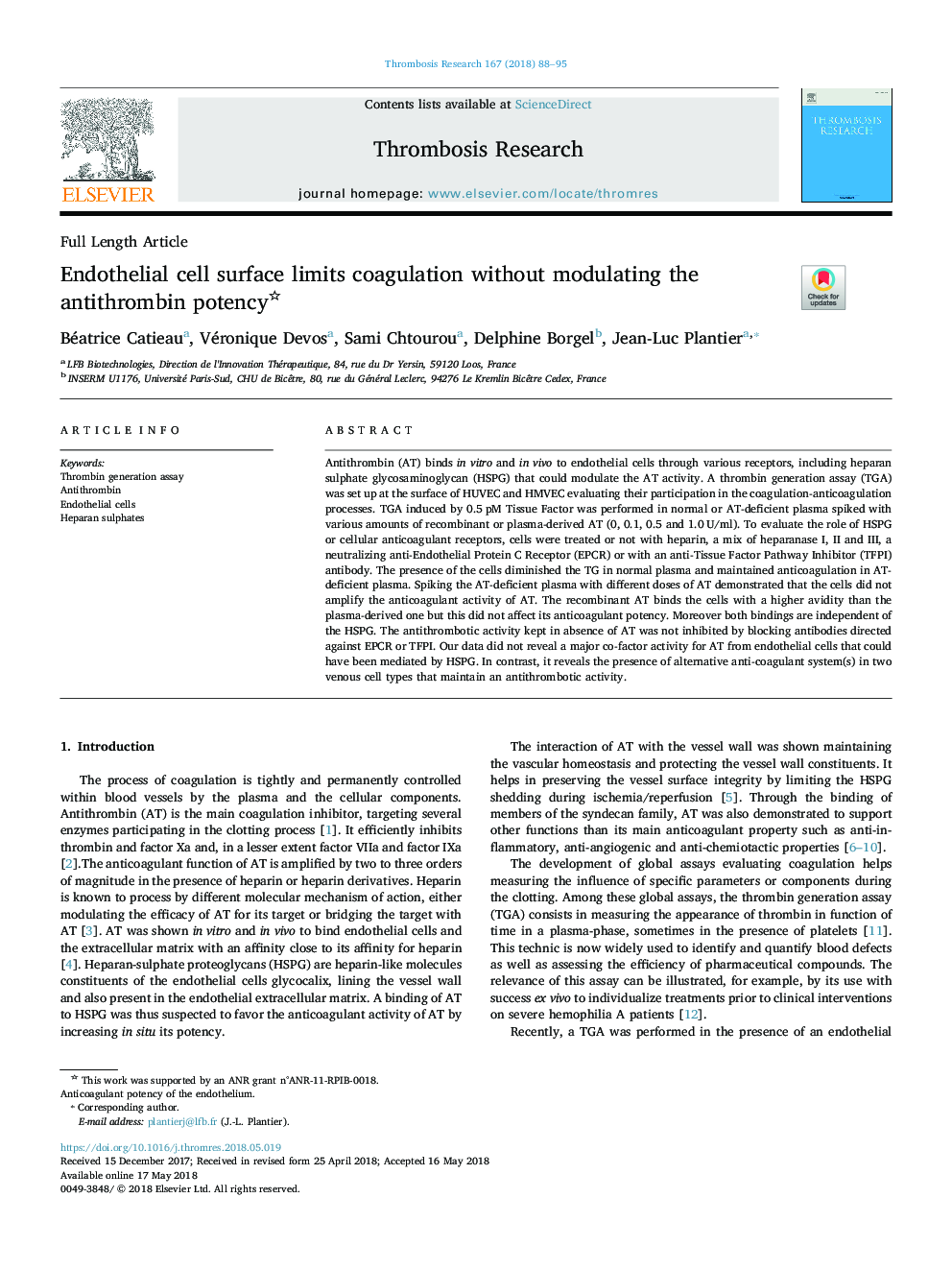| Article ID | Journal | Published Year | Pages | File Type |
|---|---|---|---|---|
| 8679361 | Thrombosis Research | 2018 | 8 Pages |
Abstract
Antithrombin (AT) binds in vitro and in vivo to endothelial cells through various receptors, including heparan sulphate glycosaminoglycan (HSPG) that could modulate the AT activity. A thrombin generation assay (TGA) was set up at the surface of HUVEC and HMVEC evaluating their participation in the coagulation-anticoagulation processes. TGA induced by 0.5â¯pM Tissue Factor was performed in normal or AT-deficient plasma spiked with various amounts of recombinant or plasma-derived AT (0, 0.1, 0.5 and 1.0â¯U/ml). To evaluate the role of HSPG or cellular anticoagulant receptors, cells were treated or not with heparin, a mix of heparanase I, II and III, a neutralizing anti-Endothelial Protein C Receptor (EPCR) or with an anti-Tissue Factor Pathway Inhibitor (TFPI) antibody. The presence of the cells diminished the TG in normal plasma and maintained anticoagulation in AT-deficient plasma. Spiking the AT-deficient plasma with different doses of AT demonstrated that the cells did not amplify the anticoagulant activity of AT. The recombinant AT binds the cells with a higher avidity than the plasma-derived one but this did not affect its anticoagulant potency. Moreover both bindings are independent of the HSPG. The antithrombotic activity kept in absence of AT was not inhibited by blocking antibodies directed against EPCR or TFPI. Our data did not reveal a major co-factor activity for AT from endothelial cells that could have been mediated by HSPG. In contrast, it reveals the presence of alternative anti-coagulant system(s) in two venous cell types that maintain an antithrombotic activity.
Related Topics
Health Sciences
Medicine and Dentistry
Cardiology and Cardiovascular Medicine
Authors
Béatrice Catieau, Véronique Devos, Sami Chtourou, Delphine Borgel, Jean-Luc Plantier,
